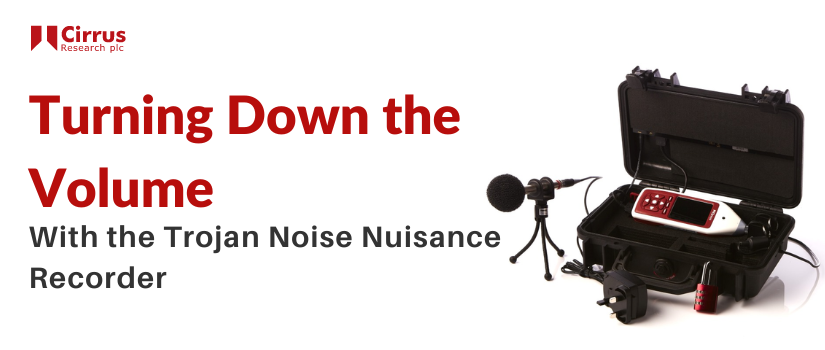The ability for a local authority to provide an efficient and effective refuse and recycling service is pivotal for both residents and the upkeep of the surrounding environment. However with the increased noise levels that new recycling initiatives generate it is imperative that the welfare of operatives working in this sector is looked after rigorously. David Wilford of No Going Back Productions, a specialist in noise measurement for waste collection and recycling services, discusses noise risks in the refuse and recycling sector.
Refuse and recycling operatives are subjected to a vast amount of noise, ranging from that generated from traffic and vehicle machinery, to the actual disposal of refuse and recycling; this combination of noise results in high exposure to noise levels that, without the correct hearing protection, can lead to permanent hearing damage. For example, when glass impacts on glass, i.e. when a plastic box or wheeled bin is emptied, extremely high levels of noise are emitted. Peak levels above 140 dB(C) are common and it is possible during a typical shift for a loader to be frequently exposed to peaks above 137 dB(C).
Noise induced hearing loss is defined as irreversible damage to the ear drums caused by exposure to high levels of noise and it is both unnecessary as well as something that can be prevented by employers and employees working together.
It is a fact that the kerbside collection of glass is an extremely noisy activity, so noisy that without the correct hearing protection, a loader could receive their eight hour legal limit of noise exposure (or dose) in just twenty minutes. Alarmingly, this level of exposure is akin to a racing car mechanic working in professional motorsport. This fact may come as a surprise to many, nevertheless the risks are the same and therefore hearing protection measures should be replicated where possible.
Overall daily dose levels typically vary from 93 dB(A) up to 99 dB(A), or in other words between 600% and 2200% above the second action level of 85 dB(A). This means that without adequate hearing protection the operative can face permanent hearing damage.
Street collection of household waste (wheeled bins or black sacks) and recycled waste (paper or cans in plastic boxes) also has the potential to be a loud activity. There are many sources of noise, for example, the vehicle engine and hydraulics system, emptying the contents of the bin, road traffic and the bin lift or compactor mechanism. Fortunately these noise levels are generally significantly lower than glass collection activities and it is possible for a loader’s daily dose or exposure to be below action level 2, thereby negating the absolute requirement for hearing protection to be worn.
If a worker’s daily exposure exceeds 80dB(A) then, although not compulsory, it is considered beneficial that hearing protection be worn. If the dose exceeds 85dB(A) then it is mandatory that hearing protection be worn.
Careful consideration should be given to the wearing of hearing protection as overprotection could have a negative effect on the users awareness of other environmental noise such as road traffic. This may potentially expose the worker to a far greater (and potentially more immediate) hazard than noise, for example road traffic accidents. The challenge for employers is to strike the correct balance between protecting their workforce from the damaging effects of noise exposure whilst, at the same time, not subjecting them to other hazards. Even with the latest in vehicle design, the kerbside collection of glass still relies on hearing protection to protect workers from hearing damage. The correct selection of PPE and achieving high workforce wear rates is therefore crucial if this last line of defence is to be effective.
Measuring individual noise exposure
A robust occupational health regime of audiometry testing of the at risk groups of workers is paramount to confirm that the noise control measures are working; organisations should undertake noise surveys on a regular basis to measure sound levels and define the risk control strategies to be implemented. There is a variety of noise measurement equipment available to assess and help analyse the exposure levels that operators experience. One provider of such equipment is Cirrus Research who is an expert in the creation and production of noise measurement instruments, including sound level meters, noise meters, noise dosimeters, environmental noise monitoring systems and acoustic transducers. Of particular importance is the doseBadge, a wireless personal noise dosimeter that allows refuse and recycling operators to wear an unobtrusive noise measurement device on their shoulder throughout the day. This doseBadge allows the collation of vital noise statistics that will help inform the employer of potential noise risks to its workforce.
Purchasing a noise measurement instrument is a big investment; local authorities need to carry out thorough research to ensure that their needs are met by the instrument/s. It is of course vital that noise measurement instruments measure accurately not only to meet standards, regulations and guidelines but to clarify on an ongoing basis whether noise damage is occurring in the workplace or the environment. Each time a piece of equipment is used it should automatically be calibrated using an acoustic calibrator, both before and after each measurement. This helps verify that the equipment is working correctly and is known as field calibration. However, due to the precise nature of a measurement instrument it should be subject to routine factory verification, known as calibration, every year, to ensure that it continues to perform accurately and operate to its original specifications.
South Northamptonshire Council recently commissioned a noise report for kerbside glass recycling and refuse collection services from No Going Back Productions. Helen Marshall, Corporate Health and Safety Adviser at South Northamptonshire Council comments on the experience:
Using doseBadges on individual operatives worked well as it revealed the exposure levels caused by different operatives’ sorting methods and provided some sobering personal daily dose readings which left us in no doubt that action was needed. The analysis provided on the hearing protection we were issuing to staff was particularly useful and we have now purchased some alternative ear plugs, in consultation with our staff, which offer an adequate level of noise reduction without overprotecting operatives. I now feel we have a clear understanding of the noise issues associated with our refuse and recycling collections and are therefore much better placed to be able to manage them.
Further information
For further information on noise monitoring equipment suitable for waste and recycling please visit www.cirrusresearch.com.
For further information on the services provided by David Wilford please call 01858 410278.



